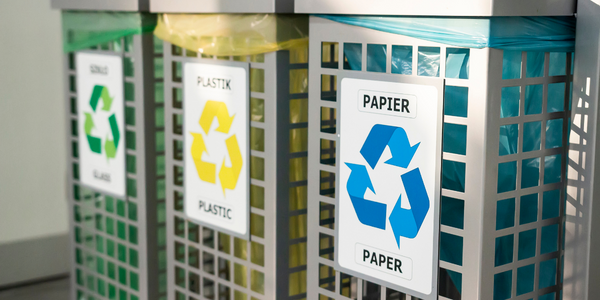Customer Company Size
Large Corporate
Region
- Europe
Country
- Germany
Product
- SAP for Insurance Collections and Disbursements (SAP FS-CD)
- SAP Incentive and Commission Management (SAP FS-ICM)
- SAP NetWeaver Data Warehouse
- IKAROS
- SAP ERP
Tech Stack
- SAP
- IBM Component Business Model (CBM) methodology
- IBM Ascendant SAP methodology
- IBM Worldwide Project Management Method (WPMM)
Implementation Scale
- Enterprise-wide Deployment
Impact Metrics
- Cost Savings
- Productivity Improvements
Technology Category
- Functional Applications - Enterprise Resource Planning Systems (ERP)
Applicable Functions
- Business Operation
Use Cases
- Predictive Replenishment
- Predictive Waste Reduction
Services
- System Integration
- Software Design & Engineering Services
About The Customer
Based in Wiesbaden, R+V Versicherung AG is one of the leading insurance providers in Germany, offering customized insurance services to private and corporate customers. With almost seven million customers and about 13,000 employees, R+V’s income from premiums exceeded €11 billion in 2010. As part of the German co-operative banks association, the company offers its services in more than 13,500 branches of the Volks- und Raiffeisen banks across Germany, and also sells through local representatives and agencies. R+V relies on SAP ERP solutions for core business management tasks such as finance, accounting and human resources.
The Challenge
R+V Versicherung AG, a leading insurance provider in Germany, was aiming to build the “Insurance of the Future.” The company wanted to provide streamlined insurance services across Europe, with low operational expenses and commercially attractive premium rates. However, their existing business management solutions were not capable of providing a global, enterprise-wide view of finances and workflow processes. The company wanted to understand its own operational performance in more detail, manage finances more efficiently, and introduce automation of standardized processes wherever possible. Over the years, R+V had built up a range of heavily customized dedicated applications to manage premium collections, and its technical landscape was gradually becoming more complex, with variations at each office location. In a rapidly shifting insurance marketplace, which is also subject to new and constantly changing regulations, application complexity hindered R+V’s ability to respond to business needs.
The Solution
R+V worked with IBM Global Business Services and others to transform its premium collection processes and organizational structure. Using the IBM Component Business Model (CBM) methodology, R+V was able to analyze its business processes and design a process-optimized workflow management as well as a corresponding service-oriented architecture to support the introduction of SAP Insurance Collections and Disbursements (FS-CD) – the largest implementation of this solution in Europe. Combined with SAP Incentive and Commission Management (SAP FS-ICM) and an IKAROS debt recovery management solution from Ferber Software, the new platform delivers an integrated and automated workflow process across the enterprise. The new solution connects to 12-15 policy management systems and online portals, such as broker portals and the call center portal. Automated interfaces transfer SAP FS-CD transactions to the SAP financials solution and to the SAP NetWeaver Data Warehouse.
Operational Impact
Quantitative Benefit

Case Study missing?
Start adding your own!
Register with your work email and create a new case study profile for your business.
Related Case Studies.

Case Study
PrismTech - Vortex platform in Nice’s Connected Boulevard project
In 2008, the City of Nice made a commitment to become a model Eco City and put in place a plan for renovation by launching the Connected Boulevard Project. One of the key areas of focus was to develop green transportation and reduce the negative consequences of urban activity on the citizens of the city.
Case Study
Designing an intuitive UI for effective product demand forecasting in retail
The client, a leading luxury store chain operating in over 100 countries, was facing challenges with their product demand forecasting process. The process involved a significant amount of manual work, with all sales-related data being kept in Excel tables and calculated manually. The client's merchandising and planning experts used a demand forecasting web application to make estimations of customer demand over a specific period of time. The solution calculated historical data and other analytical information to produce the most accurate predictions. However, the client wanted to improve the efficiency and effectiveness of this process, making it faster, more accurate, and less complicated for their employees. They sought to unify all processes under an intuitive UI.

Case Study
Nordsense: Revolutionizing Waste Management with IoT
The world generates 2.01 billion tons of municipal solid waste annually, and traditional waste management methods are proving to be highly inefficient. Approximately 80% of waste is collected at the wrong time, leading to overflowing bins, unsanitary environments, citizen complaints, illegal dumping, and increased cleaning and collection costs. Early waste collections also contribute to unnecessary carbon emissions, increased traffic congestion, and higher operating costs. Nordsense, a Denmark-based company, aims to address these challenges and revolutionize the waste management sector using IoT sensors and data insights.
Case Study
Bosch Rexroth's Green Engineering Success with Altium Designer
Bosch Rexroth, a Fortune 100 company and one of the world’s largest suppliers of technology and services, has been committed to sustainability and green engineering practices for nearly half a century. The company recognizes the potential of green engineering to reduce costs, improve product performance, enhance corporate reputation, and open up new market opportunities. However, to truly be considered 'green', engineers must consider factors such as product life cycle, reusability, and the elimination of toxic chemicals. Bosch Rexroth’s engineering division faced the challenge of designing its latest Rexroth Frequency Converter Fe series to be more economical and environmentally friendly. The goal was to reduce parts, size, and power consumption, while improving reliability and stability.
Case Study
Blue Bottle Coffee Enhances Ordering Accuracy and Reduces Waste with ML-Driven Demand Forecasting
Blue Bottle Coffee (BBC), a global coffee roaster and retailer, faced a significant challenge in managing the supply of pastries across its international network of cafes. The company was using a manual ordering system, where cafe leaders estimated the required quantity of pastries based on historical sales data, current inventory, and growth projections. This system was effective when BBC had a few cafes, but with over 70 cafes worldwide, it became inefficient and inaccurate. The inaccuracies led to either under-ordering, causing sell-outs and customer dissatisfaction, or over-ordering, resulting in food waste and profit loss. The suboptimal utilization of pastries was also affecting BBC's bottom line. Therefore, BBC needed a scalable, precise, and predictive ordering solution to improve pastry ordering accuracy, reduce food waste, and meet its sustainability goals.




